The Council of Architecture (CoA) has instructed to conduct NATA twice a year for admission to first year of 5 year B.Arch. degree course offered by recognized institutions across the country. This has become a mandatory exam for getting admission into B.Arch degree course. The online application for National Aptitude Test in Architecture is expecting to be released by January.
NATA Eligibility Criteria
Please read and confirm whether you meet the said criteria for NATA:
Candidates should have passed class 12th exam.
Candidates who have scored minimum50% marks in aggregate in Chemistry, Physics and Mathematics and 50% marks in Aggregate in class 12th exam or cleared 10+2 diploma exam with Mathematics as a compulsory subject with securing 50% marks in aggregate.
Appearing candidates are also permitted to take the exam.
NATA Application Form
Candidates can fill and submit NATA application form from the official web portal of NATA. The application form is released in January every year. You’ll be asked to fill application form, upload documents and make payment of fee. The size of photograph should be in between 4Kb to 100KB and size of signature should be in between 1KB to 30KB. Do not forget to obtain printout of the confirmation page which will be generated after the payment of application fee. You don’t need to send hard copy of application form, just be careful while filling the application form.
Application Fee
Here is the prescribed application fee for candidates selected test centre in India and outside of India:
For test centres in India
| Candidates’ category | Prescribed fee |
| For One Session: | |
| General | Rs. 1800/- |
| SC/ST | Rs. 1500/- |
| For Both Session: | |
| General | Rs. 3500/- |
| SC/ST | Rs. 2800/- |
For test centres outside of India
| Sessions | Prescribed Fee |
| One session | Rs. 10,000/- |
| Both sessions | Rs. 18,000/- |
Question Paper Format
Go through the prescribed exam pattern for NATA:
There will two parts of exam. The part A will include questions from Drawing and Part B will include questions from MCQ from Math and Aptitde.
Total marks for question paper in online mode is 120 and in offline mode is 80.
The language mode of the question paper will be English only.
There is no negative marking in the exam.
Exam Structure
| Subjects Involved | Marks | Marks in Total |
| Part A | ||
| Drawing | 2 x 35
1 x 55 |
70
55 |
| Part B | ||
| PCM(15Questions carrying 1.5marks each) | 15x 1.5 | 22.5 |
| General Aptitude& Logical Reasoning(35 Questions carrying 1.5marks each) | 35x 1.5 | 52.5 |
| Total | 200 | |
NATA Syllabus
Drawing Test
Understanding of scale and proportion of objects, geometric composition, shape, building forms and elements, aesthetics, colour texture, harmony and contrast. Conceptualization and Visualization through structuring objects in memory. Drawing of patterns -both geometrical and abstract. Form transformations in 2D and 3D like union, subtraction, rotation, surfaces and volumes. Generating plan, elevation and 3D views of objects. Creating 2D and 3D compositions using given shape and forms. Perspective drawing, Sketching of urban scape and landscape, Common day-to-day life objects like furniture, equipment etc., from memory.
Physics
Electrostatics-Electric charges and Fields; Electrostatic Potential and CapacitanceCurrent Electricity; Magnetic Effects of Currentand Magnetism; Moving Charges and magnetism; Magnetism and MatterElectromagnetic Induction and Alternating currents-Electromagnetic Induction;Alternating CurrentOptics-Ray optics and optical instruments, Wave OpticsDual nature of radiation and MatterAtoms and Nuclei-Atoms, NucleiElectronic devices-Semiconductor Electronics, Materials, Devices and Simple circuits
Chemistry
Some Basic Concepts of Chemistry; Structure of Atom; Classification of Elements and Periodicity in Properties
Chemical Bonding and Molecular; Statesof Matter: Gases and LiquidsChemical Thermodynamics; Equilibrium; Redox Reactions; Hydrogen; s-Block Elements p-Block ElementsOrganic Chemistry: Some basic Principles and Techniques; Hydrocarbons; Environmental Chemistry
Mathematics
Algebra:Definitions of A. P. and G.P.; General term; Summation of first n-terms of series ∑n, ∑n²,∑n3 ; Arithmetic/Geometric series, A.M., G.M. and their relation; Infinite G.P. series and its sum.Logarithms:Definition; General properties; Change of base.Matrices: Concepts of m x n (m ≤ 3, n ≤ 3) real matrices, operations of addition, scalar multiplication and multiplication of matrices. Transpose of a matrix. Determinant of a square matrix. Properties of determinants (statement only). Minor, cofactor and adjoint of a matrix. Nonsingular matrix. Inverse of a matrix. Finding area of a triangle. Solutions ofsystem of linear equations. (Not more than 3 variables).Trigonometry:Trigonometric functions, addition and subtraction formulae, formulae involving multiple and submultiple angles, general solution of trigonometric equations. Properties of triangles, inverse trigonometric functions and their properties.Coordinate geometry:Distance formula, section formula, area of a triangle, condition of collinearity of three points in a plane. Polar coordinates, transformation from Cartesian to polar coordinates and vice versa. Parallel transformation of axes, concept of locus, elementary locus problems. Slope of a line. Equation of lines in different forms, angle between two lines. Condition of perpendicularity and parallelism of two lines. Distance of a point from aline. Distance between two parallel lines. Lines through the point of intersection of two lines. Equation of a circle with a given center and radius. Condition that a general equation of second degree in x, y may represent a circle. Equation of a circle in terms of endpoints of a diameter. Equation of tangent, normal and chord. Parametric equation of a circle. Intersection of a line with a circle. Equation of common chord of two intersecting circles.3-DimensionalCo-ordinate geometry: Direction cosines and direction ratios, distance between two points and section formula, equation of a straight line, equation of a plane, distance of a point from a plane.Theory of Calculus:Functions, composition of two functions and inverse of a function, limit, continuity, derivative, chain rule, derivative of implicit functions and functions defined parametrically.Integration as a reverse process of differentiation, indefinite integral of standard functions. Integration by parts. Integration by substitution and partial fraction.Definite integral as a limit of a sum with equal subdivisions. Fundamental theorem of integral calculus and its applications. Properties of definite integrals.Formation of ordinary differential equations, solution of homogeneous differential equations, separation of variables method, linear first order differential equations.Application of Calculus:Tangents and normals, conditions of tangency. Determination of monotonicity, maxima and minima. Differential coefficient as a measure of rate. Motion in a straight line with constant acceleration. Geometric interpretation of definite integral as area, calculation of area bounded by elementary curves and Straight lines. Area of the region included between two elementary curves.Permutation and combination:Permutation of n different things taken r at a time (r ≤ n). Permutation of n things not all different. Permutation with repetitions (circular permutation excluded). Combinations of n different things taken r at a time (r ≤ n). Combination of n thingsnot all different. Basic properties. Problems involving both permutations and combinations.Statistics and Probability:Measure of dispersion, mean, variance and standard deviation, frequency distribution. Addition and multiplication rules of probability,conditional probability and Bayes’ Theorem, independence of events, repeated independent trails and Binomial distribution.
General Aptitude
Objects, texture related to architecture and built environment. Interpretation of pictorial compositions, Visualizing three-dimensional objects from two-dimensional drawing. Visualizing different sides of 3D objects. Analytical reasoning, mental ability (visual, numerical and verbal), General awareness of national/ international architectsand famous architectural creations.Mathematical reasoning: Statements, logical operations like and, or, if and only if, implies, implied by. Understanding of tautology, converse, contradiction and contrapositive.Sets and Relations:Idea of sets, subsets, power set, complement, union, intersection and difference of sets, Venn diagram, De Morgan’s Laws, Relation and its properties. Equivalence relation —definition and elementary examples.


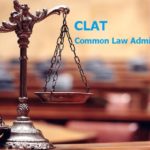




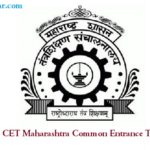
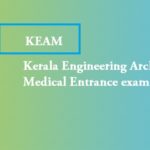
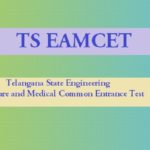

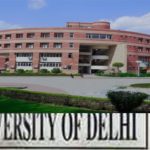
Indian army join India
Sir can i take addmisson in jnv please please please sir